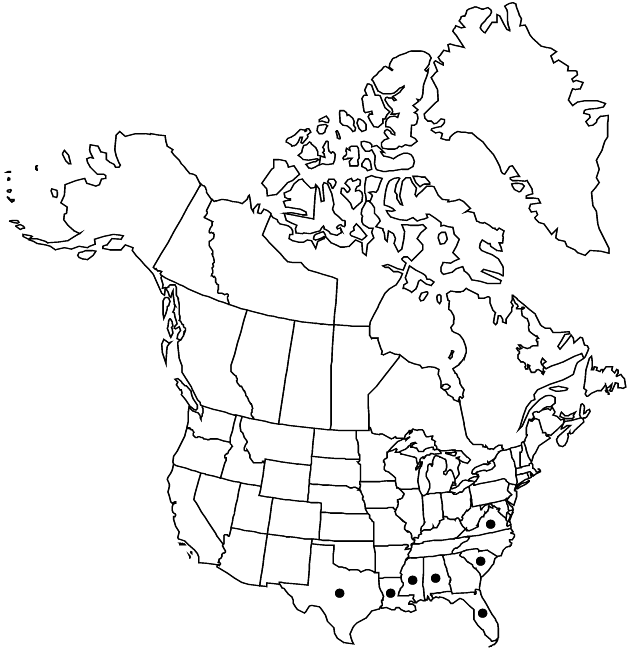Eupatorium ×pinnatifidum
Sketch Bot. S. Carolina 2: 295. 1823.
Perennials, 40–100+ cm. Stems (from short caudices) single, densely branched distally, puberulent throughout. Leaves opposite (proximal) or alternate (nodes often appearing leafy, lateral buds develop leaves without axis elongation); sessile; blades (usually 1–2-pinnately or ternately lobed) or lobes pinnately nerved or 1-nerved, linear, 20–100 × 0.5–1.5 mm, bases narrowly cuneate to attenuate, margins entire or serrate, apices acute, faces puberulent, glanddotted. Heads in subcorymbiform to subpaniculiform arrays. Phyllaries 10–12 in 2–3 series, elliptic to oblong, 1–3.5 × 0.5–1 mm, apices acute to acuminate, shortly mucronate, abaxial faces puberulent, glanddotted. Florets 7–9; corollas 2–2.5 mm. Cypselae 1–1.5 mm; pappi of 20–30 bristles 2.5–3 mm. 2n = 20.
Phenology: Flowering Aug–Oct.
Habitat: Dry to wet areas, roadsides, around ponds, open pine woods
Elevation: 20–100 m
Distribution

Ala., Fla., La., Miss., S.C., Tex., Va.
Discussion
Eupatorium ×pinnatifidum has been suggested to represent a series of recurrent hybrids between E. capillifolium or E. compositifolium and E. perfoliatum; molecular data, in addition to confirming that this combination occurs, also show that E. serotinum rather than E. perfoliatum is the second parent in at least some plants included in E. ×pinnatifidum.
Selected References
None.
Lower Taxa
"fine" is not a number.